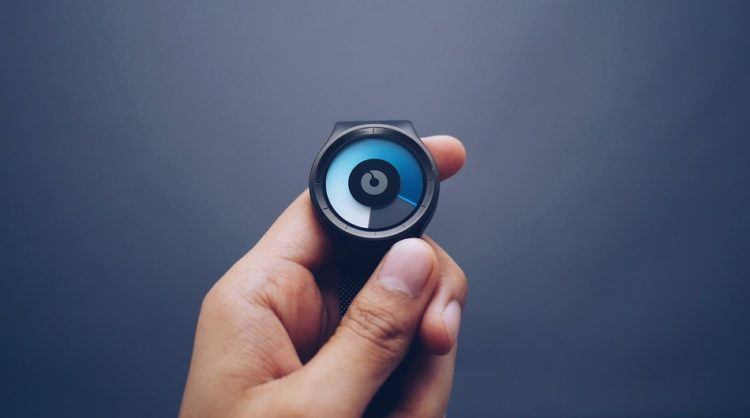
GIF source: GIPHY
Sai Kiran was about to launch his first product offering – Teewe, a media streaming device. He knew setting up a hardware startup would be challenging, given India’s limited resources for hardware manufacturing, but went ahead anyway.
He ended up losing US$100,000 when he sought to make a prototype in India for Teewe.
The local manufacturer pulled out a week before the product launch, eroding the capital available with the company. The team had to eventually turn to China to solve the manufacturing glitch, Sai, Creo founder said at the Blueprint Workshop organized by 500 startups and Autodesk in Bangalore on Saturday.
Sai isn’t alone. Despite the hype around PM Narendra Modi’s Make in India program, the country’s startup hardware ecosystem is yet to get a kickstart.
“Hardware is definitely at a disadvantage in India. Investors perceive hardware to be more cost-intensive. Hardware companies have far riskier bets than software,” said Soaib Grewal, venture partner at 500 Startups and design mentor at Microsoft Accelerator.
Yet, some remain optimistic.
But a hardware startup needs a lot more than just a high-quality prototype to succeed.
With the creation of maker-spaces in major metros such as IKP-EDEN incubator and Workbench Projects in Bangalore as well as Maker’s Asylum in Delhi and Mumbai, startups have access to relevant machinery to make prototypes. What’s more, products like Autodesk’s Fusion 360 provide hardware startups a platform to create a proof-of-concept on your laptop. And it’s free for early-stage startups.
But a hardware startup needs a lot more than just a high-quality prototype to succeed. We’ve got you covered: Tech in Asia caught up with some industry experts at the Blueprint workshop to get some useful mentorship for you. Here’s a peek:

Photo credit: Slate.
Build to solve local problems
If your ambition is to conquer the world, this might be difficult to achieve.
But the most effective way to make a hardware product succeed is to identify niche problems and address them. Prashant Subhedar of Bang Designs, which advises hardware companies in the design and manufacturing stage, says that a hardware product should be made relevant and useful.
For instance, a drone maker can project the device for mass popularity, but not everyone will want to own it. The trick is to pitch it to specific sectors, like defense or a local traffic department.
“The product can obviously reach a wider audience gradually, but identifying areas where it is needed most will bring the orders,” Subhedar says. To get that identification right, a thorough market study is crucial. Founders must also prepare statistics on market size and trends. Study consumer behavior and place your product where it is needed most. For instance, Jawbone first developed noise-canceling headsets for soldiers and then diversified into other kinds of wearables.
“Software can be updated regularly, but hardware updates are extremely rare. There is no beta or alpha version of the product. If the product doesn’t work, it can’t be changed, unlike software, which can be manipulated,” Subhedar says. So build your product with a specific focus area.
Keep software integration in mind
Startups need to understand how hardware plays a role in a country’s overall market. Making a consumer-centric product for India doesn’t work well in hardware. Instead, the real opportunity locally will be in enterprise, SMEs, and agritech solutions with hardware as the core of their service delivery.
“Today, nothing is just hardware. Every product needs to work with software. Hardware solutions that back software will be the way to go,” Soaib says. Take for example GreyOrange, which develops robotics for warehouse automation. It’s one of the most successful hardware startups in India – and it allows customized software.

Photo credit: Pixabay.
Plan your costs ahead
It’s a no-brainer that hardware startups need more funds than their software counterparts. To top it, there’s very little funding for companies without working prototypes. According to Subhedar of Bang Designs, a hardware startup needs anything between US$1 million and US$1.5 million to just get the product to the prototype stage.
To avoid overhead expenses, especially if you are putting in your (and your family’s) hard-earned money, it’s imperative that you understand and break down your pre-production costs. This also means taking into account typical failure points in the process of product development.
The first thing a hardware startup must do is get customer feedback. “Take feedback multiple times. This isn’t software that you can tweak even after a release. Plus, you will not recover the cost of the prototype you have made if you have to junk it at a later stage without selling one,” Soaib says.
Don’t compromise on prototype quality
Building a good prototype is the job half done, Varun Gadhok of Autodesk quips. A bad product model can break your venture even before it starts. Invest in a good prototype, and use high-quality materials. It will push up your costs, but will be worth it when your investors are impressed.
A good prototype will help you communicate the right design to manufacturers; it will help you get accurate customer feedback and get investors excited.
To build a good prototype, invest time in finding the right vendor, assessing the correct materials required, and identifying the manufacturing processes for your particular product. Before manufacturing, first assemble your product part-by-part.
“Assembling a product part-by-part will make things clear for you and your manufacturer. It will help you weed out all problem areas before the product hits manufacturing stage,” says Avinash Kaushik, founder of startup accelerator RevvX.

Biofourmis has access to hundreds of fitness wearable APIs to gather and process data from. Photo credit: Pexels.com
Don’t be swayed by the ‘make in India’ wave
In the long run, manufacturing locally will be important, especially to keep expenses in check. But till India’s manufacturing capability matures, it’s okay for you to explore vendors in known hubs like Shenzhen in China.
Instead of trying to find a suitable vendor here, spend time worrying about the supply chain, procuring the right material, and optimizing costs. What’s more, the vendors in India are wary of customization, and may not eventually provide a satisfactory prototype.
Creo’s Sai says that there’s no point in being adamant on doing everything locally. “Startups have to be smart and be flexible to choose resources that work for them. If that means taking the entire manufacturing to China, so be it.”
You can also approach maker-spaces for assistance, at least in the prototyping stage. But component sourcing and small-batch manufacturing in India is still a sore point. Most manufacturers won’t entertain orders below 1,000 pieces, which puts a massive strain on startups.
Diversify your team
Most hardware startup founders are from an engineering background. A hardware developer may understand the complexity of a product, but a product designer may not. If you have a diversified core team with opinions from the worlds of sales and marketing, advertising, data analysis, communications and design, it will help you create a product that will have a wider impact.
Without proper branding and a great sales pitch, your product will languish in digital or physical store shelves. Your package messaging must be appealing enough to convince a busy shopper to buy it. Your ultimate goal is to sell your brand.
“Most hardware startups concern themselves only with developing an intelligent product. But that product needs to be brought to the right people, it needs to be marketed, and it needs to make its presence felt,” Subhedar says. Much like the HBO series Silicon Valley, your product will be stuck in the design stage if you don’t account for practical feedback from your sales team, which will have a better perspective on what could work. To prevent that, create an experience-rich team.
This post Building a hardware startup in India is tough. Here’s how to rise to the challenge appeared first on Tech in Asia.
from Tech in Asia https://www.techinasia.com/tips-for-hardware-startups
via IFTTT
No comments:
Post a Comment